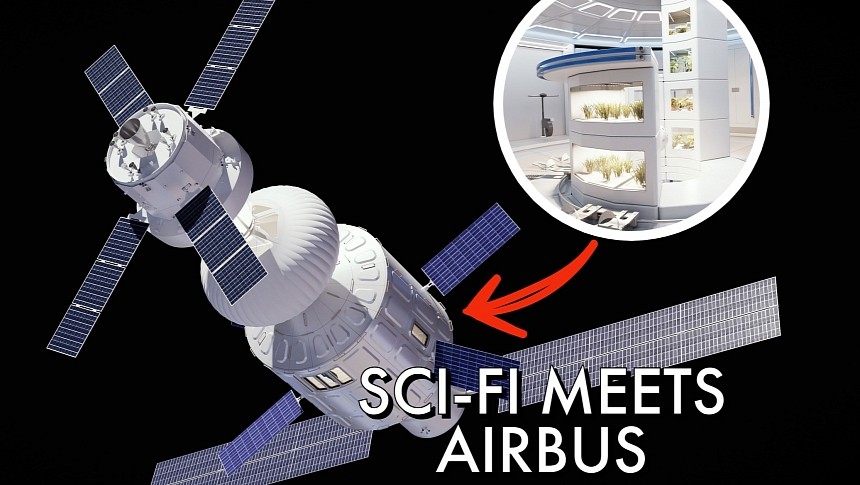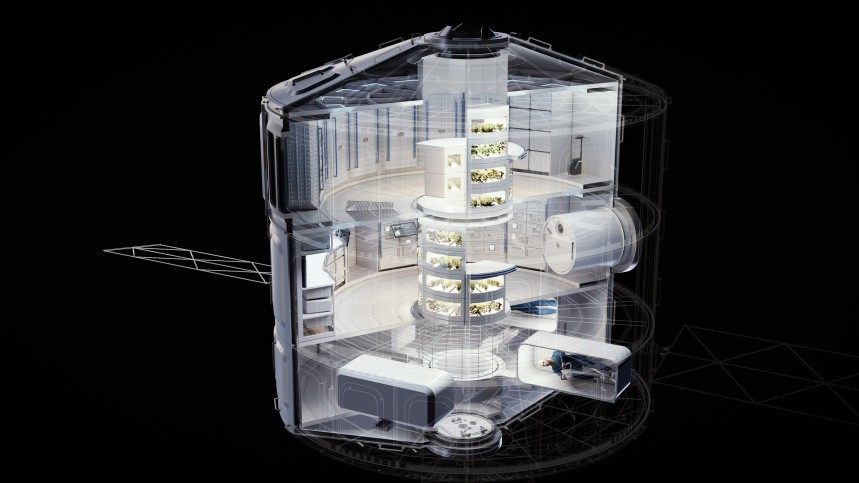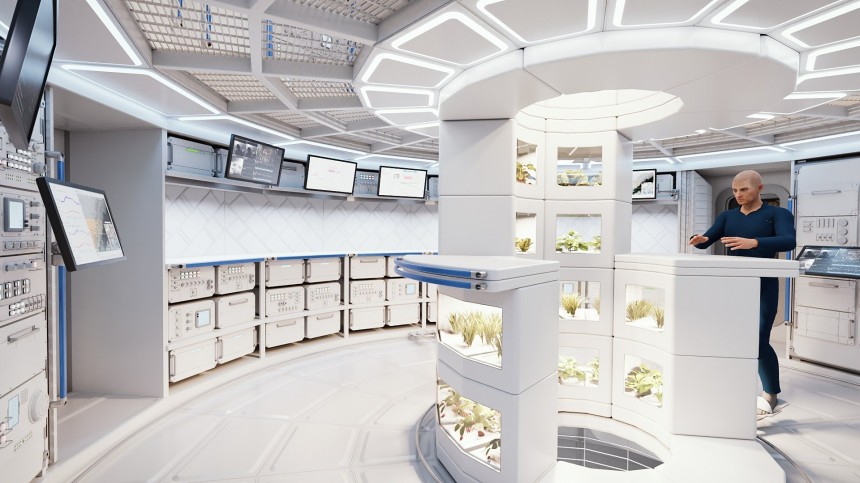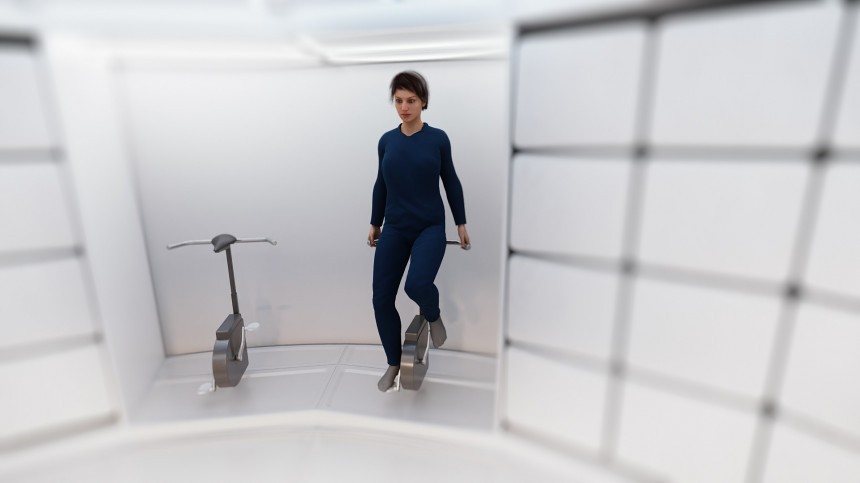The clock is ticking on the ISS (International Space Station), so the pressure for a replacement is increasing – preferably with a much more comfortable, functional, and future-proof habitat. The LOOP from Airbus wants to be that replacement and an obvious upgrade to existing solutions.
The ISS was launched in 2000 and has so far hosted over 200 astronauts from 19 countries. It will remain in operation until 2030, when it will begin a controlled descent before crashing into the "space graveyard" known as the South Pacific Oceanic Uninhabited Area, or Point Nemo, in a ball of fire. NASA believes possible and viable ISS replacements could be commercially operated space platforms, and this is where Airbus comes in with the LOOP, among other things.
The LOOP is only a concept for the time being, but still illustrative of the possible direction of future space habitats. It's more like the space modules we've seen in sci-fi Hollywood productions and far removed from the cramped ISS. It is, in short, a proper habitat with all the creature comforts and then some, but located in space.
The biggest thing about the LOOP is that it's more than a habitat: it is a multi-functional and highly versatile module that can have countless applications, depending on the needs of the mission. Designed by Airbus, it's described as "the next step towards the Space Station of the future," a clear indication that it's not meant to leave the concept stage in this particular form.
Call it space-exploration-themed daydreaming, and you're probably not completely off the mark. The LOOP is the equivalent of car and superyacht concepts from established names in their respective fields, a study into the possibilities of the future with today's technologies, which may or may not influence future designs. It's a sci-fi dream by way of Airbus, and we're here for it.
The LOOP offers unprecedented volume in space by means of three oversize circular decks connected at the center by a circular tunnel, wrapped in a rigid outer shell that offers protection from external factors. Each deck is 8 meters (26 feet) in diameter and about the same size in length, and with a specific function in the standard model.
There's a Habitation Deck, a Science Deck, and a Centrifuge, connected by the Tunnel whose walls are a greenhouse structure. The names of each level are self-explanatory, so Airbus doesn't bother much with descriptors.
The Habitation Deck offers sleeping and accommodation for four astronauts at a time, though it can house as many as eight people on an exceptional, temporary basis. The Science Deck would hold all the equipment and tech for research, while the Centrifuge would be a space with gravity conditions where astronauts could retire to get relief from the stress of weightlessness. Also here, Airbus adds a gymnasium with a couple of stationary bikes for a literal change of pace.
The Tunnel would serve more than an aesthetic function or that of providing fresh greens to those onboard. It would be at the core of what Airbus calls an "internal safe harbor," adding a touch of wellness to the functionality of such a habitat, following detailed research showing the effects of extended space missions on mental and physical health.
Because of this, the LOOP is not envisioned just as a functional space to run operations and research from, but also as a comfortable, self-contained unit where inhabitants could find enjoyment and relaxation. It's a proper home in space, just like in those sci-fi movies mentioned above – but a home that doubles as your space-office.
In terms of versatility, Airbus imagines offering the LOOP as a standard model or a customizable one, with customers choosing to change one deck or more according to the needs and the budget of their mission. With the same goal of ultra-versatility in mind, Airbus could offer the LOOP as a "dry” module or only a single deck: a structure with no outfitting, which could be docked to an existing space station or other modules, and outfitted by the customer. Similarly, several LOOP modules in any deck layout could be combined to create a larger station. Future-proofing a structure meant to serve humanity, whether for institutional or commercial purposes, for decades to come is a task that Airbus doesn't take lightly.
On the topic of future-proofing, the LOOP is designed to become operational immediately once in orbit because it could fit "the upcoming generation of super-heavy launchers," so it would launch in one piece. Once at its destination, it would welcome human crew or payload right away, in low-Earth or Lunar orbit, or even "on long-term missions to Mars." If we're to dream a dream of space exploration and awesome space habitats, Airbus clearly sees no need to stop short of a future mission to the Red Planet.
The LOOP is only a concept for the time being, but still illustrative of the possible direction of future space habitats. It's more like the space modules we've seen in sci-fi Hollywood productions and far removed from the cramped ISS. It is, in short, a proper habitat with all the creature comforts and then some, but located in space.
The biggest thing about the LOOP is that it's more than a habitat: it is a multi-functional and highly versatile module that can have countless applications, depending on the needs of the mission. Designed by Airbus, it's described as "the next step towards the Space Station of the future," a clear indication that it's not meant to leave the concept stage in this particular form.
The LOOP offers unprecedented volume in space by means of three oversize circular decks connected at the center by a circular tunnel, wrapped in a rigid outer shell that offers protection from external factors. Each deck is 8 meters (26 feet) in diameter and about the same size in length, and with a specific function in the standard model.
There's a Habitation Deck, a Science Deck, and a Centrifuge, connected by the Tunnel whose walls are a greenhouse structure. The names of each level are self-explanatory, so Airbus doesn't bother much with descriptors.
The Habitation Deck offers sleeping and accommodation for four astronauts at a time, though it can house as many as eight people on an exceptional, temporary basis. The Science Deck would hold all the equipment and tech for research, while the Centrifuge would be a space with gravity conditions where astronauts could retire to get relief from the stress of weightlessness. Also here, Airbus adds a gymnasium with a couple of stationary bikes for a literal change of pace.
Because of this, the LOOP is not envisioned just as a functional space to run operations and research from, but also as a comfortable, self-contained unit where inhabitants could find enjoyment and relaxation. It's a proper home in space, just like in those sci-fi movies mentioned above – but a home that doubles as your space-office.
In terms of versatility, Airbus imagines offering the LOOP as a standard model or a customizable one, with customers choosing to change one deck or more according to the needs and the budget of their mission. With the same goal of ultra-versatility in mind, Airbus could offer the LOOP as a "dry” module or only a single deck: a structure with no outfitting, which could be docked to an existing space station or other modules, and outfitted by the customer. Similarly, several LOOP modules in any deck layout could be combined to create a larger station. Future-proofing a structure meant to serve humanity, whether for institutional or commercial purposes, for decades to come is a task that Airbus doesn't take lightly.














